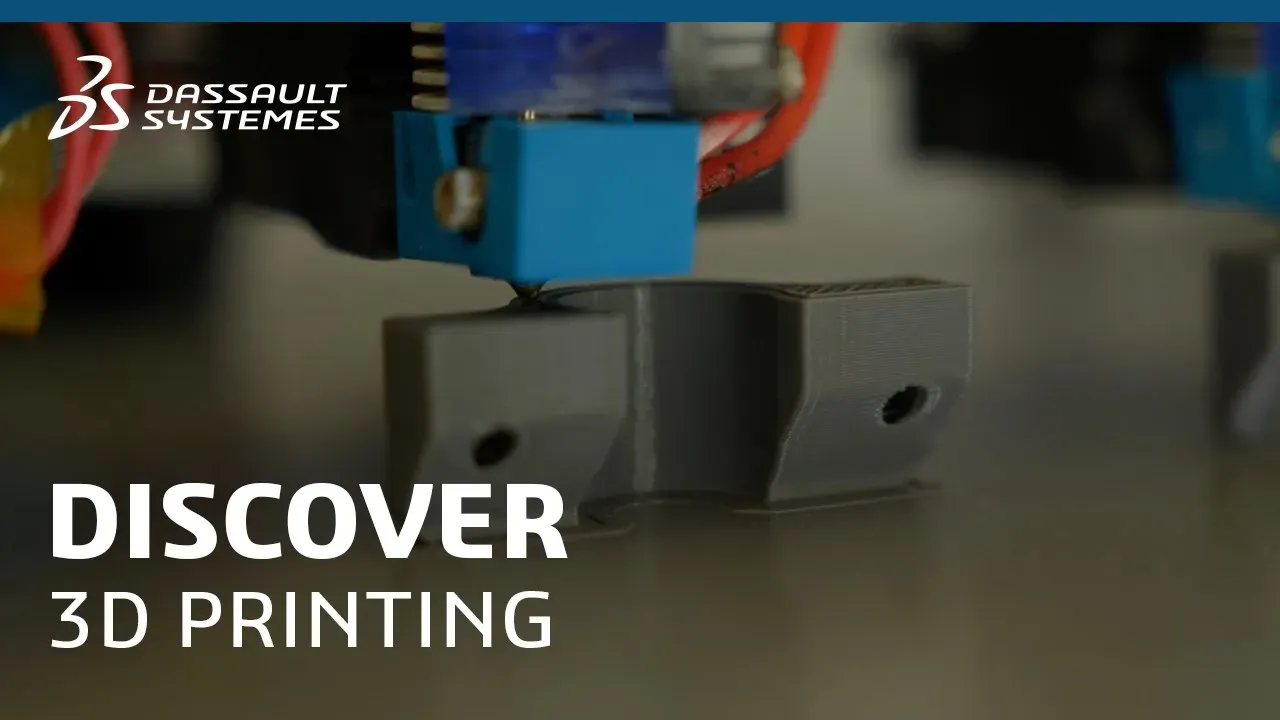3D Printing video
Discover with a video how the 3D Printing / Additive manufacturing process works with 3DEXPERIENCE Make, the on-demand manufacturing by Dassault Systèmes, and his partner Any-Shape.
What is inside the 3D Printing video?
Hello! Today we’re going to talk about additive manufacturing.
What is additive manufacturing? It’s an industrial process that’s also called 3D printing, which allows us to create parts from 3D models by adding materials, layer by layer.
How does 3D Printing work?
Additive manufacturing is different from the three other main manufacturing methods: subtractive manufacturing, manufacturing via molding and manufacturing via cutting. In fact, it can be done in three ways. The first method involves transforming the material and then depositing it layer by layer.
The second method is done by depositing the material and then using a powerful energy source, an electron beam or a laser for example, to transform the material.
The third method consists of either depositing alternating layers of the material and a binder, or depositing a material and a binder simultaneously to create a part. Additive manufacturing processes are grouped into seven main categories which are defined by international standards. If you would like to learn more, details on these categories are available online.
What materials for 3D Printing?
So, what materials could we use to make a part? The possibilities are almost infinite. You can manufacture parts using polymers, metals, ceramics, concretes, food products, woods, and a whole range of composites. These different materials can be used in a solid, liquid or powder form.
What are the advantages of 3D Printing?
Why has 3D printing or additive manufacturing become the latest craze? First of all, it’s a disruptive technology, which allows for greater creativity and can be used to create better-performing parts. It’s also an agile method that allows for parts to be manufactured locally. Finally, it’s good for the planet because it uses only the necessary amount of material and, most of the time, that material can be recycled.
What is 3D Printing applications?
So, what are the possible applications of additive manufacturing? We can manufacture prototypes or tools, but also parts, and items for the sports and industrial sectors. We can also produce a variety of components for the human body and medical products, such as orthopedic insoles. There are many uses for additive manufacturing in the health sector, the automotive industry, the aerospace sector, and in day-to-day life. Thank you for watching this introduction, if you would like to know more about industrial manufacturing processes, we invite you to watch the other episodes in this series which we filmed with our partners in France and Europe.
Get multiple quotes for your parts in seconds
